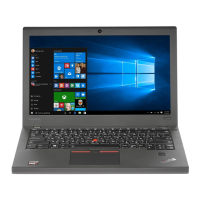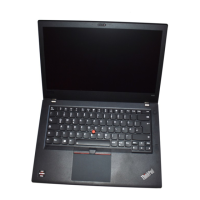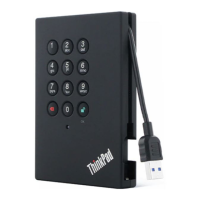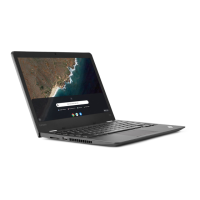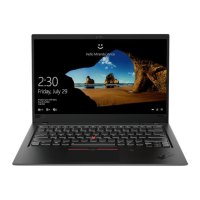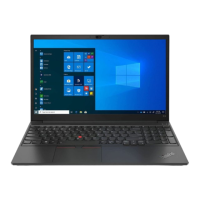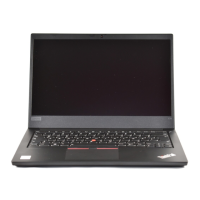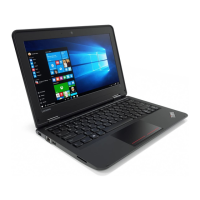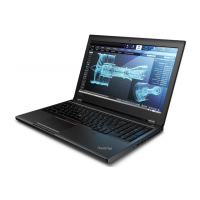Do you have a question about the Lenovo ThinkPad A285 and is the answer not in the manual?
Identifies and describes the computer's hardware features and components.
Provides essential details like machine type, FCC ID, and operating system info.
Details physical dimensions, heat output, and power requirements of the computer.
Instructions and benefits of registering your Lenovo computer for service and support.
Provides quick answers to common user queries about the computer's functionality.
Explains how to use the TrackPoint pointing device and trackpad for navigation and gestures.
Guides on managing ac power and battery to optimize performance and conserve power.
Details on establishing and using wireless-LAN, wireless-WAN, and Bluetooth connections.
Instructions for using conventional and infrared cameras for photos, video, and face authentication.
How to connect and configure external monitors for extended workspace or presentations.
Information on available accessories and upgrades to expand computer capabilities.
Instructions on using Basic, Pro, and Ultra Docking Stations to expand connectivity.
Step-by-step guide on how to connect the computer to various ThinkPad docking stations.
Features and tools to assist users with disabilities, including keyboard shortcuts and screen readers.
Guidance on setting up a workstation and adopting work habits for comfort and to prevent injury.
Basic tips and procedures for cleaning the computer cover, keyboard, and screen.
Explains power-on, supervisor, and hard disk password options for computer security.
Details on protecting data with drive encryption, security chips, and BitLocker.
How to enroll and use the fingerprint reader for secure and convenient login.
Step-by-step instructions for installing the Windows 10 OS, including driver setup.
Information on obtaining and installing necessary device drivers for proper hardware operation.
Guide to configuring BIOS settings for startup sequence, security, and hardware options.
Instructions on how to update the system's BIOS for performance and security improvements.
Proactive measures and maintenance advice to avoid common computer issues and errors.
Steps to identify and troubleshoot hardware or software issues using diagnostic tools.
Solutions for when the computer becomes unresponsive or freezes, requiring troubleshooting steps.
Explains common error codes and provides solutions for resolving system or hardware errors.
Solutions for display issues like blank screens, distortion, or incorrect resolution.
Troubleshooting steps for issues with sound playback, microphones, or speakers.
How to reset the computer to its factory settings, with options to keep or remove files.
Accessing advanced boot options for firmware, startup settings, or system image recovery.
Steps to create and utilize a USB drive for Windows recovery and troubleshooting.
Information on parts that can be upgraded or replaced by the customer or technician.
Precautions to take to prevent static discharge damage when handling computer components.
Instructions for removing and installing a new keyboard on the computer.
Advice on gathering information and troubleshooting steps before seeking Lenovo support.
Information on various sources for obtaining help, service, and technical assistance from Lenovo.
Details on how to contact Lenovo support via telephone for problem determination and repair.
Provides compliance IDs and machine types for regulatory certification purposes.
Details on wireless interoperability, Bluetooth profiles, and usage guidelines.
FCC and other compliance statements regarding electromagnetic emissions.
Encourages responsible recycling of IT equipment and provides links for Lenovo recycling programs.
Explains WEEE marking and regulations for proper disposal of electrical and electronic equipment.
States compliance with EU Directive 2011/65/EU regarding hazardous substances in equipment.
Details on ENERGY STAR qualified models and power management features for energy efficiency.
General disclaimers, warranty limitations, and copyright information related to the document.
Lists trademarks of Lenovo and other companies mentioned in the document.
| Form factor | Clamshell |
|---|---|
| Product type | Laptop |
| Product color | Black |
| Housing material | Carbon |
| Country of origin | France |
| Processor cache | 6 MB |
| Processor cores | 4 |
| Processor model | 2300U |
| Processor family | AMD Ryzen™ 3 PRO |
| Processor frequency | 2 GHz |
| Processor manufacturer | AMD |
| Processor boost frequency | 3.4 GHz |
| Discrete graphics card | Yes |
| On-board graphics card | - |
| On-board graphics card model | AMD Radeon Vega 6 |
| On-board graphics card family | AMD Radeon Vega Graphics |
| Motherboard chipset | AMD SoC |
| Internal memory | 8 GB |
| Internal memory type | DDR4-SDRAM |
| Maximum internal memory | 32 GB |
| SSD interface | M.2, NVMe, PCI Express |
| Storage media | SSD |
| Optical drive type | No |
| Total storage capacity | 256 GB |
| Panel type | WVA |
| Display diagonal | 12.5 \ |
| Anti-glare screen | Always gives an optimal view, even in direct sunlight. |
| Display brightness | 300 cd/m² |
| WWAN | Not installed |
| Bluetooth version | 4.2 |
| Top Wi-Fi standard | Wi-Fi 5 (802.11ac) |
| Ethernet LAN data rates | 10, 100, 1000 Mbit/s |
| Privacy type | Privacy shutter |
| Front camera HD type | HD |
| Number of microphones | 2 |
| Trusted Platform Module (TPM) version | 2.0 |
| Battery capacity | 48 Wh |
| AC adapter power | 65 W |
| Operating system language | French |
| Operating system architecture | 64-bit |
| USB 2.0 ports quantity | USB 2.0 ports have a data transmission speed of 480 Mbps, and are backwards compatible with USB 1.1 ports. You can connect all kinds of peripheral devices to them. |
| Keyboard layout | AZERTY |
| Depth | 209.8 mm |
|---|---|
| Width | 307.7 mm |
| Height | 17.4 mm |
| Weight | 1260 g |
